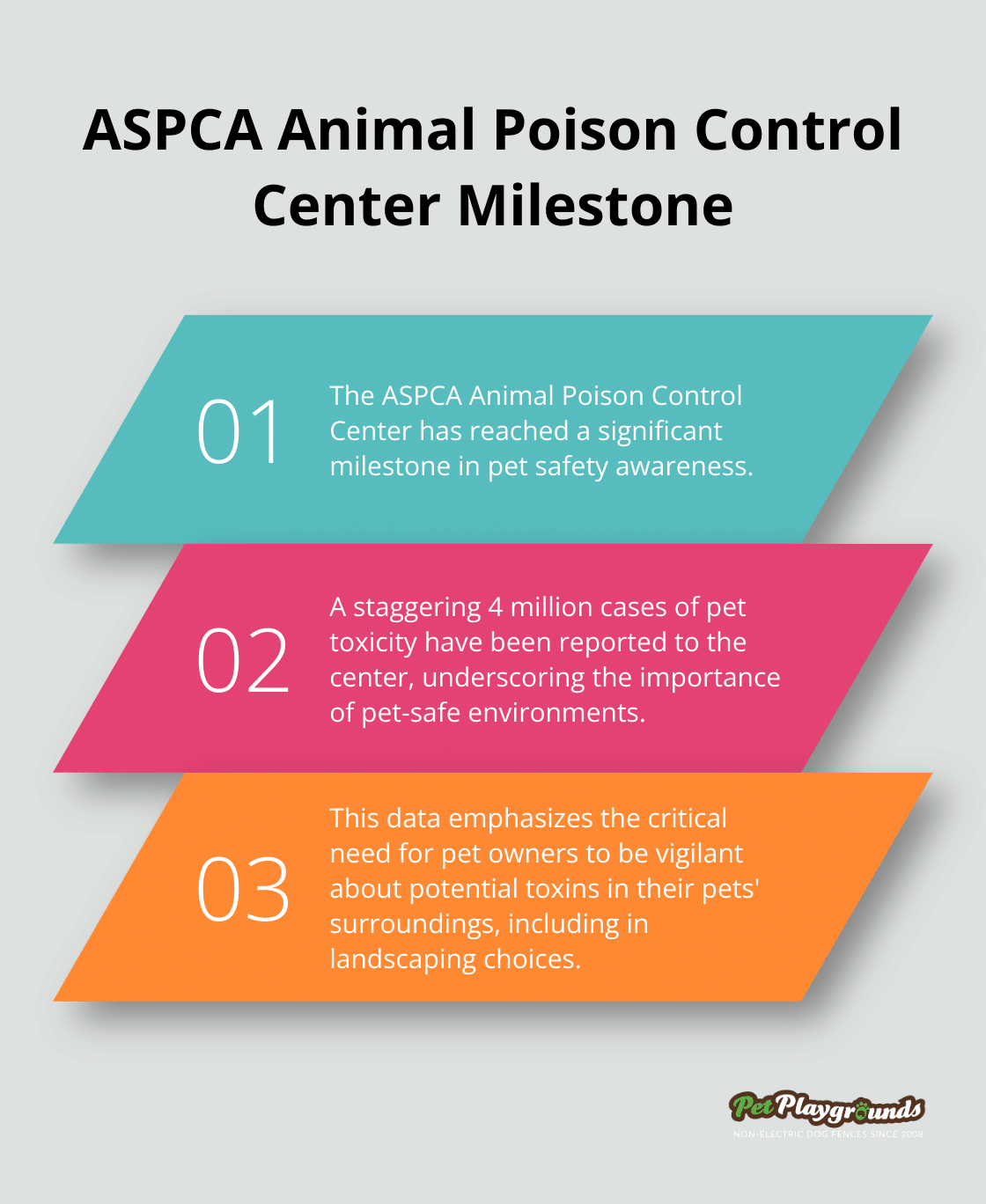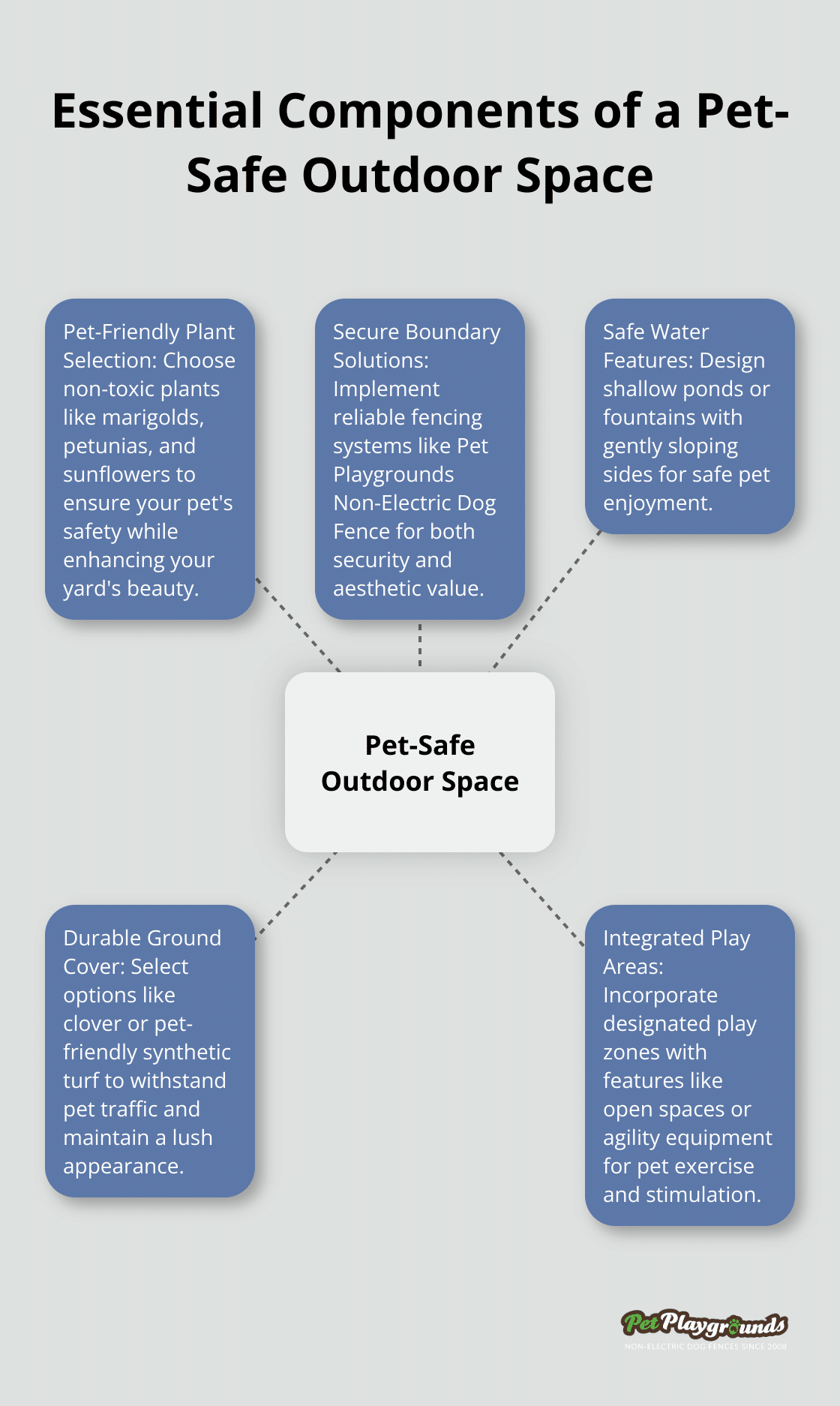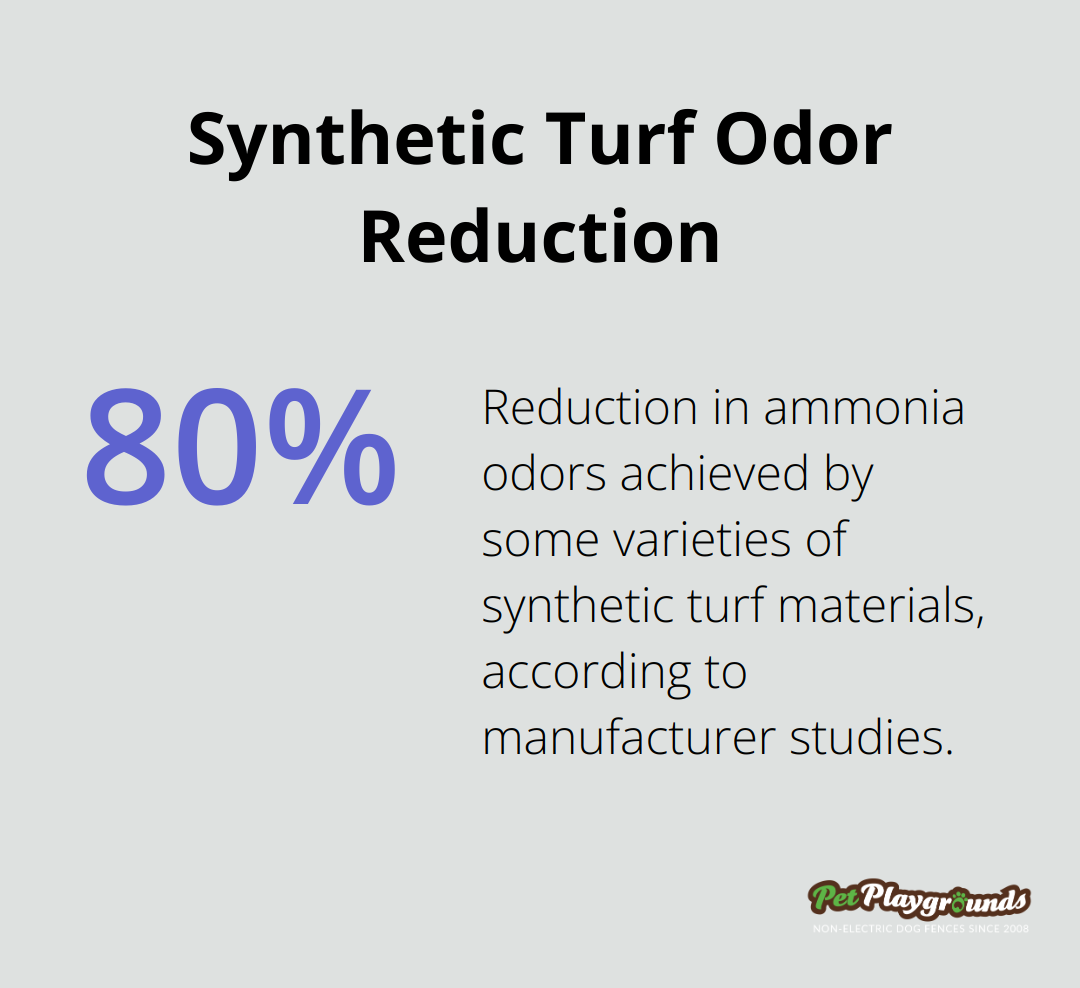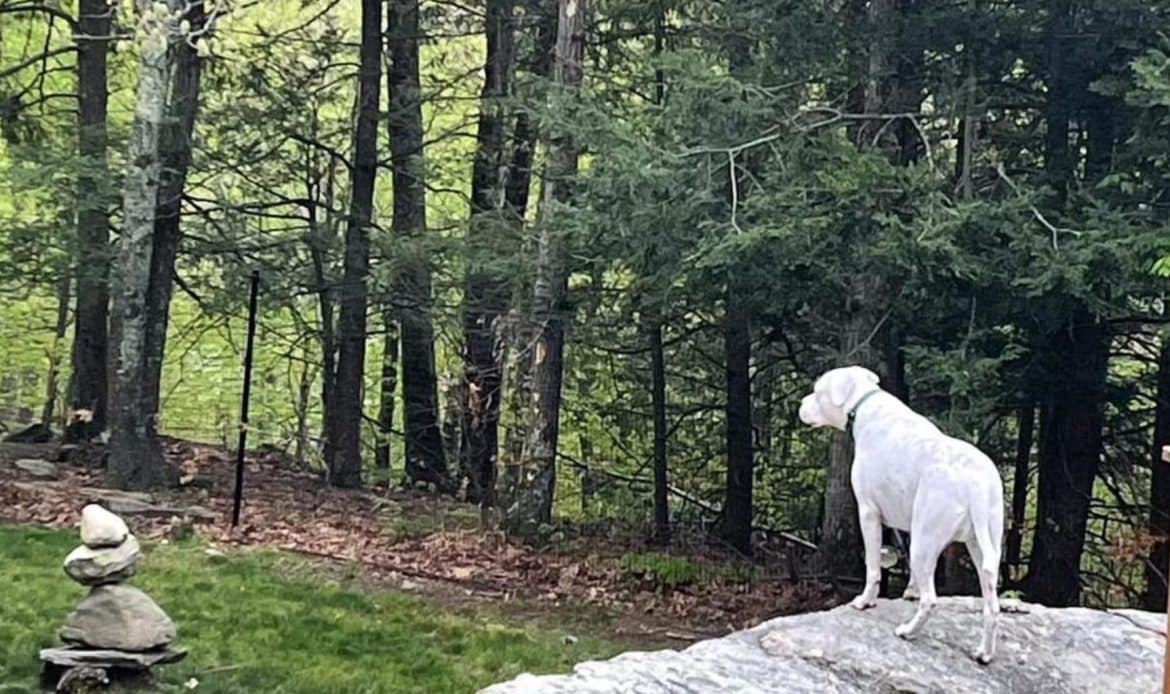Creating a pet-safe outdoor space requires careful planning and collaboration with your landscaper. At Petplaygrounds Non electric dog fence, we understand the importance of balancing aesthetics with your furry friend’s safety and comfort.
This guide will help you navigate landscaper collaboration to design a beautiful and secure environment for your pets. We’ll cover essential elements of pet-friendly landscapes and provide practical tips for integrating pet-safe features into your outdoor space.
How to Communicate Pet Safety Needs to Your Landscaper
Explain Your Pet’s Behavior
When you work with a landscaper to create a pet-friendly outdoor space, clear communication is essential. Start by providing a comprehensive overview of your pet’s habits. Does your pet dig? Do they eat plants? Do they have a favorite sunbathing spot? This information helps your landscaper make informed decisions about plant placement, ground cover choices, and overall design layout.
For example, if you have a dog that loves to dig, your landscaper might suggest a designated digging area with sand or loose soil. This keeps your pet happy while it preserves the rest of your landscape.
Address Toxic Plant Concerns
Discuss any worries you have about potentially harmful plants or materials. The ASPCA reports that their Animal Poison Control Center has reached 4 million cases of pet toxicity. Share a list of plants you know are toxic to your pet, and ask your landscaper to avoid these in the design.

Many common landscaping plants (such as azaleas, rhododendrons, and certain lilies) can be dangerous for dogs. Your landscaper should suggest pet-safe alternatives that still achieve the desired aesthetic effect.
Evaluate Pet-Friendly Experience
Ask about your landscaper’s experience with pet-friendly designs. Have they worked on similar projects before? Can they provide examples or references? A landscaper with a track record of creating safe pet environments will likely have valuable insights and innovative solutions.
An experienced pet-friendly landscaper might suggest using cedar mulch instead of cocoa bean mulch (which can be toxic if ingested by dogs). They might also recommend sturdy, non-toxic ground covers like Irish moss or creeping thyme that can withstand pet traffic.
Discuss Safety Features
Talk to your landscaper about incorporating specific safety features into your outdoor space. This might include secure fencing options, safe water features, or designated play areas. If you’re considering a fencing solution, you might want to explore options like Pet Playgrounds Non-Electric Dog Fence, which offers a secure and aesthetically pleasing alternative to traditional electric fences.
A good landscaper will welcome these discussions and see them as vital to creating a successful outdoor space that meets both your aesthetic preferences and your pet’s safety needs. Open communication about your concerns and expectations sets the foundation for a pet-friendly experience that’s beautiful, functional, and safe for your furry family members. Now that we’ve covered how to communicate with your landscaper, let’s explore the key elements that make up a pet-safe landscape.
Essential Components of a Pet-Safe Outdoor Space

Pet-Friendly Plant Selection
The selection of non-toxic plants stands as a cornerstone of pet safety in landscaping. We recommend pet-safe options such as marigolds, petunias, and sunflowers. These plants not only enhance your yard’s beauty but also ensure your furry companions’ safety. It’s important to avoid common toxic plants (like azaleas, lilies, and tulips). Always research or consult with your landscaper about the safety of potential new plants. If you suspect your pet has ingested a toxic plant, get help from Poison Control online or by phone, 24/7.
Secure Boundary Solutions
A reliable fencing system provides paramount protection for pets. While traditional options like chain-link fences exist, they often lack visual appeal and determined pets can easily climb them. Pet Playgrounds Non-Electric Dog Fence offers a superior alternative that combines security with aesthetic value. Its design withstands various escape tactics, such as digging, climbing, or chewing, thanks to robust materials.
Water Feature Safety
Water features enhance landscapes, but require careful design for pet safety. We suggest shallow ponds or fountains with gently sloping sides to allow pets safe water enjoyment. Deep, steep-sided pools pose drowning risks and should be avoided. A recirculating water fountain specifically designed for pets provides fresh water and minimizes standing water concerns.
Durable Ground Cover Options
The right ground cover selection proves essential for a pet-friendly landscape. Traditional grass withstands moderate pet traffic, but high-traffic areas may require more robust solutions. Consider options like clover (more resistant to pet urine) or synthetic turf designed for pets. These alternatives maintain a lush appearance while enduring the wear and tear of active pets.
Integrated Play Areas
Designated play zones within your landscape design keep pets entertained and active. Incorporate features like open grassy spaces or agility equipment to provide both physical exercise and mental stimulation. These areas not only benefit your pet’s health but also help protect other parts of your landscape from excessive wear.
The next step in creating your pet-safe outdoor space involves integrating these essential components with additional pet-friendly features. Let’s explore how to seamlessly blend these elements into your overall landscape design.
How to Create a Pet Paradise in Your Yard
Design Multi-Functional Play Areas
Transform your yard into a pet paradise by integrating play zones that cater to your pet’s natural instincts. For dogs, include a digging pit filled with sand or loose soil. Surround this area with sturdy, pet-safe plants to create a natural boundary. Add agility equipment like tunnels or jumps, which serve both functional and decorative purposes. A study by the Journal of Veterinary Behavior found that dogs with access to enriched environments exhibited reduced stress levels and improved overall well-being.
For cats, create vertical spaces with cat-friendly climbing structures. Disguise these as artistic sculptures or integrate them into existing landscaping elements. The International Cat Care organization recommends at least one elevated resting place per cat in outdoor spaces (to reduce territorial disputes and stress).
Incorporate Comfort Zones
Create outdoor cooling zones under dense trees, pergolas, or patio covers that block direct sunlight. East-facing areas provide morning sun but offer shade during the hottest parts of the day.
Create cozy nooks using weather-resistant pet beds or cushions in sheltered areas. These spots offer a sense of security and comfort for pets while adding charming elements to your landscape design.
Implement Safe Pest Control Strategies
Maintain a pest-free environment for both pet and plant health. Many conventional pesticides pose serious risks to animals. Choose pet-safe alternatives like diatomaceous earth for insect control or neem oil for plant diseases. The National Pesticide Information Center reports that natural pest control methods can match the effectiveness of chemical options when used correctly.
Introduce beneficial insects like ladybugs or praying mantises to control harmful pests naturally. These methods protect your pets and contribute to a healthier ecosystem in your yard.
Develop Efficient Waste Management Solutions
A clean yard is essential for pet health and owner enjoyment. Designate a specific area for pet waste and use pet-friendly, biodegradable bags for cleanup. Install an in-ground pet waste disposal system to manage waste efficiently and reduce odors. This system acts as a miniature septic tank, utilizing enzymes and bacteria to turn dog waste into harmless ground material.
For areas where pets frequently urinate, use materials like gravel or artificial grass designed to resist urine damage and odors. Some varieties of these materials can reduce ammonia odors by up to 80% (according to studies conducted by synthetic turf manufacturers).

Ensure Secure Boundaries
Provide a safe and secure environment for your pets with proper fencing. While traditional options like chain-link fences exist, they often lack visual appeal and determined pets can easily climb them. Pet Playgrounds Non-Electric Dog Fence offers a superior alternative that combines security with aesthetic value. Its design withstands various escape tactics, such as digging, climbing, or chewing, thanks to robust materials.
Final Thoughts
Effective landscaper collaboration forms the cornerstone of a pet-safe outdoor space. Open communication about your pet’s habits, toxic plant concerns, and desired safety features will guide your landscaper to create a tailored design. The result combines aesthetic appeal with functionality, ensuring your furry friends can explore and play safely.
Key elements like non-toxic plants, secure boundaries, and durable ground covers transform your yard into a pet paradise. Integrating designated play areas, shaded spots, and efficient waste management solutions further enhances your outdoor living space. These additions benefit your pet’s well-being and create an enjoyable environment for the entire family.
For secure pet containment, consider Pet Playgrounds Non-Electric Dog Fence. This innovative solution offers both security and visual appeal, allowing your pets to roam freely within safe boundaries. Your thoughtful investment in a pet-friendly landscape will strengthen the bond between you and your pets, creating a haven you’ll both enjoy for years to come.
























